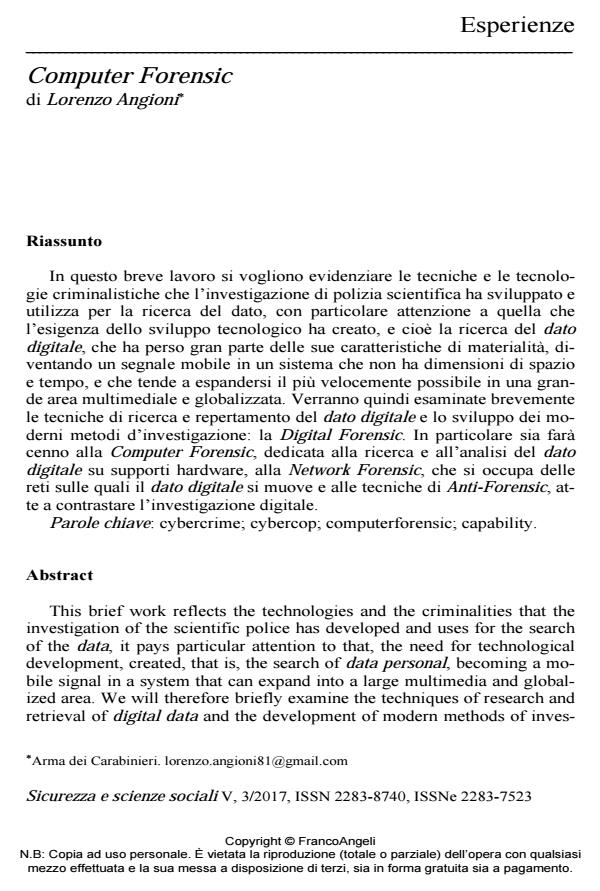Computer Forensic
Journal title SICUREZZA E SCIENZE SOCIALI
Author/s Lorenzo Angioni
Publishing Year 2018 Issue 2017/3
Language Italian Pages 11 P. 99-109 File size 202 KB
DOI 10.3280/SISS2017-003009
DOI is like a bar code for intellectual property: to have more infomation
click here
Below, you can see the article first page
If you want to buy this article in PDF format, you can do it, following the instructions to buy download credits

FrancoAngeli is member of Publishers International Linking Association, Inc (PILA), a not-for-profit association which run the CrossRef service enabling links to and from online scholarly content.
This brief work reflects the technologies and the criminalities that the investigation of the scientific police has developed and uses for the search of the data, it pays particular attention to that, the need for technological development, created, that is, the search of data personal, becoming a mobile signal in a system that can expand into a large multimedia and globalized area. We will therefore briefly examine the techniques of research and retrieval of digital data and the development of modern methods of investigation: Digital Forensic. Computer Forensic, devoted to research and analysis of digital data on hardware, Network Forensic, which deals with networks for which digital data is moving and anti-forensic techniques, aimed at countering digital investigation.
Keywords: Cybercrime; cybercop; computerforensic; capability.
Lorenzo Angioni, Computer Forensic in "SICUREZZA E SCIENZE SOCIALI" 3/2017, pp 99-109, DOI: 10.3280/SISS2017-003009